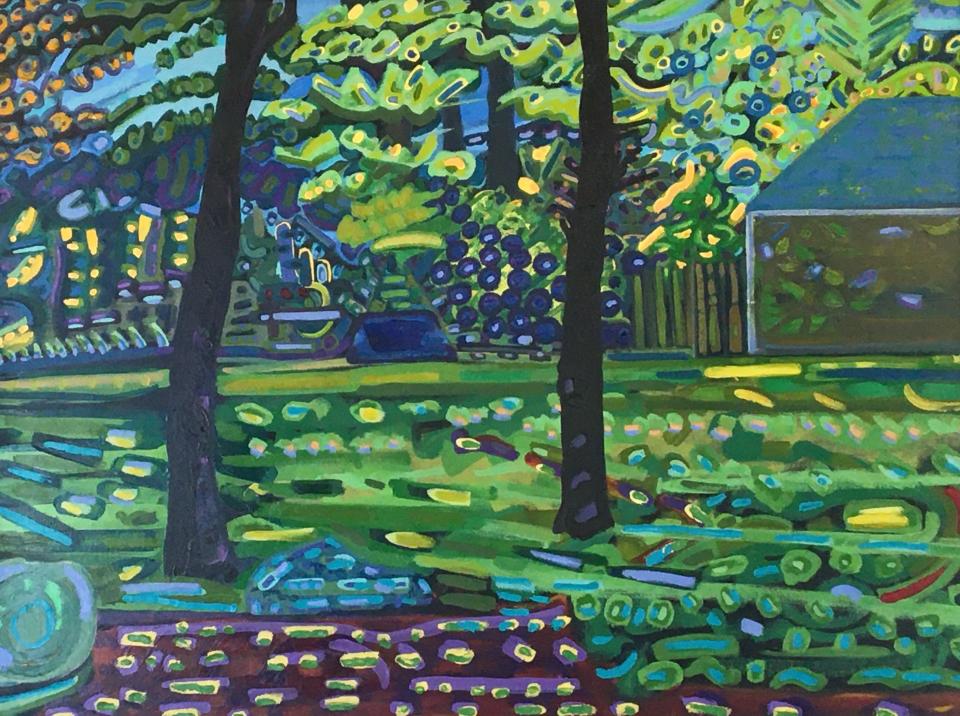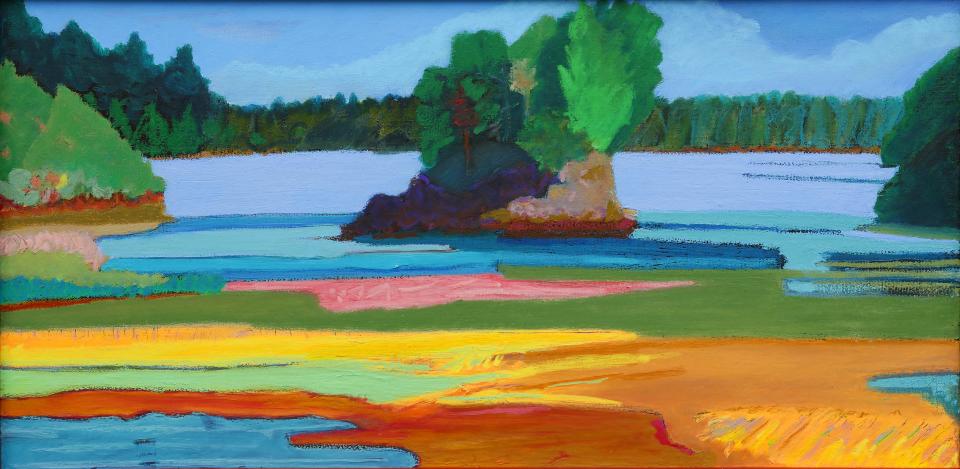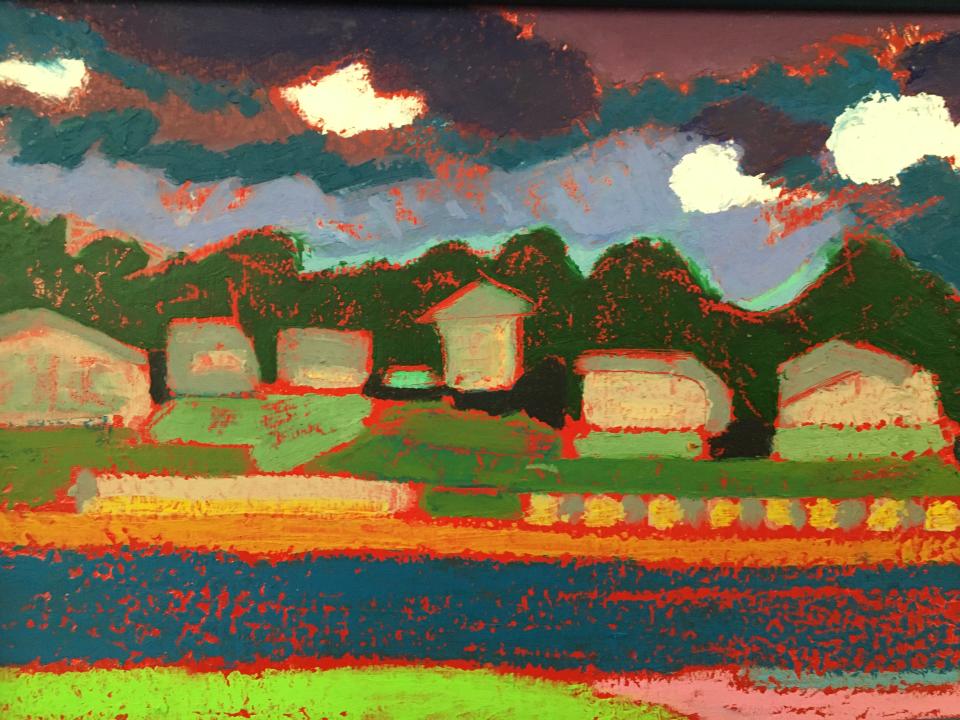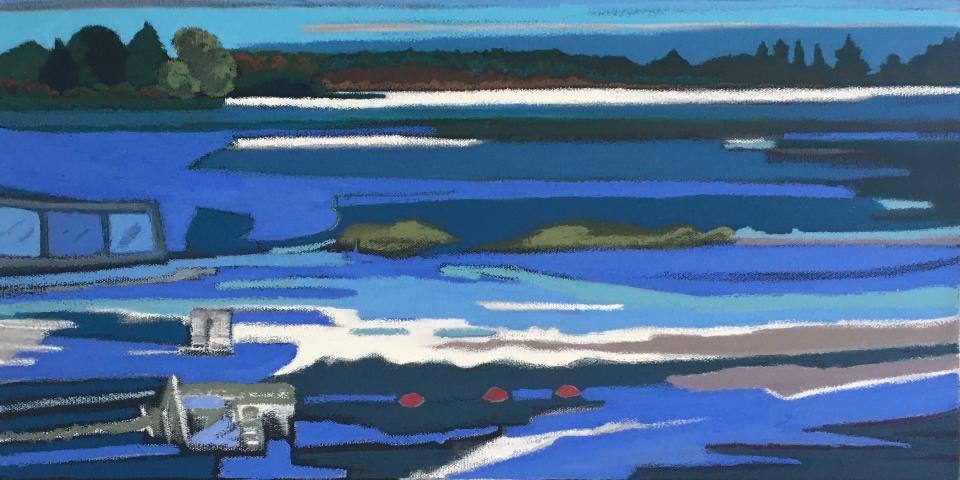Art Beat: Susan Gilmore Dartmouth exhibit transcends traditional landscapes
- Oops!Something went wrong.Please try again later.
If one closely looks at the acrylic paintings and oil pastels by Susan Gilmore, presently on display at the Dartmouth Cultural Center, it is abundantly clear that something new is taking place.
The assembled artwork, all completed within the last few years, shows a distinct creative evolution underway as she transitions from somewhat traditional landscape painting to something well beyond that, something that transcends any dutiful fidelity to the subject before her and becomes a thing unto itself.

But transcendence does not mean abandonment. One cannot move forward without acknowledging what has come before. Gilmore has not surrendered the format of the landscape, the ever present horizontal rectangle. Nor does she abandon the lessons of perspective — that old optical push and pull — but she certainly subverts those tenets, to great success.

The visual centerpiece of her painting “Sebascodegan Island” is the eponymous island itself, not but a few vibrant green trees on a clumpy purple rock. Everything in the foreground, a version of water, is soft edges and loose brushstrokes. Pale blue abuts orange which leans into pastel green, yellow, olive and pink. The lower half of the painting barely registers as a landscape as it borders on the non-representational, embracing color for color’s sake, embracing shape-making for the love of shape-making.

“Maritime Beach” features clouds of eggplant, puce and lavender hues floating over “little boxes on the hillside, little boxes made of ticky-tacky” (with apologies to Pete Seegar.) Those buildings are edged with bright red. There is an inexplicable series of tiny yellow squares, a streak of orange and a soft curve of electric green. It is a landscape but not of this world.

Gilmore was a 1982 graduate of the Swain School of Design, where she majored in sculpture. She later briefly studied with the abstract expressionist painter Grace Hartigan at the Mount Royal School of Art in Baltimore. Hartigan, who was an integral part of the New York School of the 1950s and 60s, may have rubbed something off on Gilmore.
Hartigan often danced between the edges of abstraction and the representational. In particular, her 1945 “Still Life with Yellow Bowl,” with its references to Matisse and Gorky, seems like a necessary prelude, in the big picture of art history, for Gilmore to lovingly thwart the usual expectations of the genre.
There are any number of pieces in the exhibition that demand consideration, such as “Our Backyard,” that if not for the presence of a few tree trunks and a distant outbuilding might be understood as a celebration of pattern-making and the play between elements.

Gilmore exhibits a large untitled painting that embraces the usual conventions of the landscape — a seemingly distant sky, curvaceous hills, still water — but she does it with a twist. A bright red orb floats in the sky, surrounded by circles and swirls of pure indigo. It’s hard to put aside thoughts of van Gogh’s “Starry Night” or the filmmaker Lars von Triers’ 2011 apocalyptic “Melancholia” (in which another planet strikes the Earth). So what is the orb? A particularly vibrant sunset? A rogue planet on a collision course? The eye of God? Or just the artist pushing the edge?
I’m sure Gilmore is going to let us figure it for ourselves.
“Susan Gilmore - Solo Exhibition” is on display at the Dartmouth Cultural Center, 404 Elm St., South Dartmouth, until June 24.
This article originally appeared on The Herald News: Art Beat: Susan Gilmore solo exhibit at Dartmouth Cultural Center

